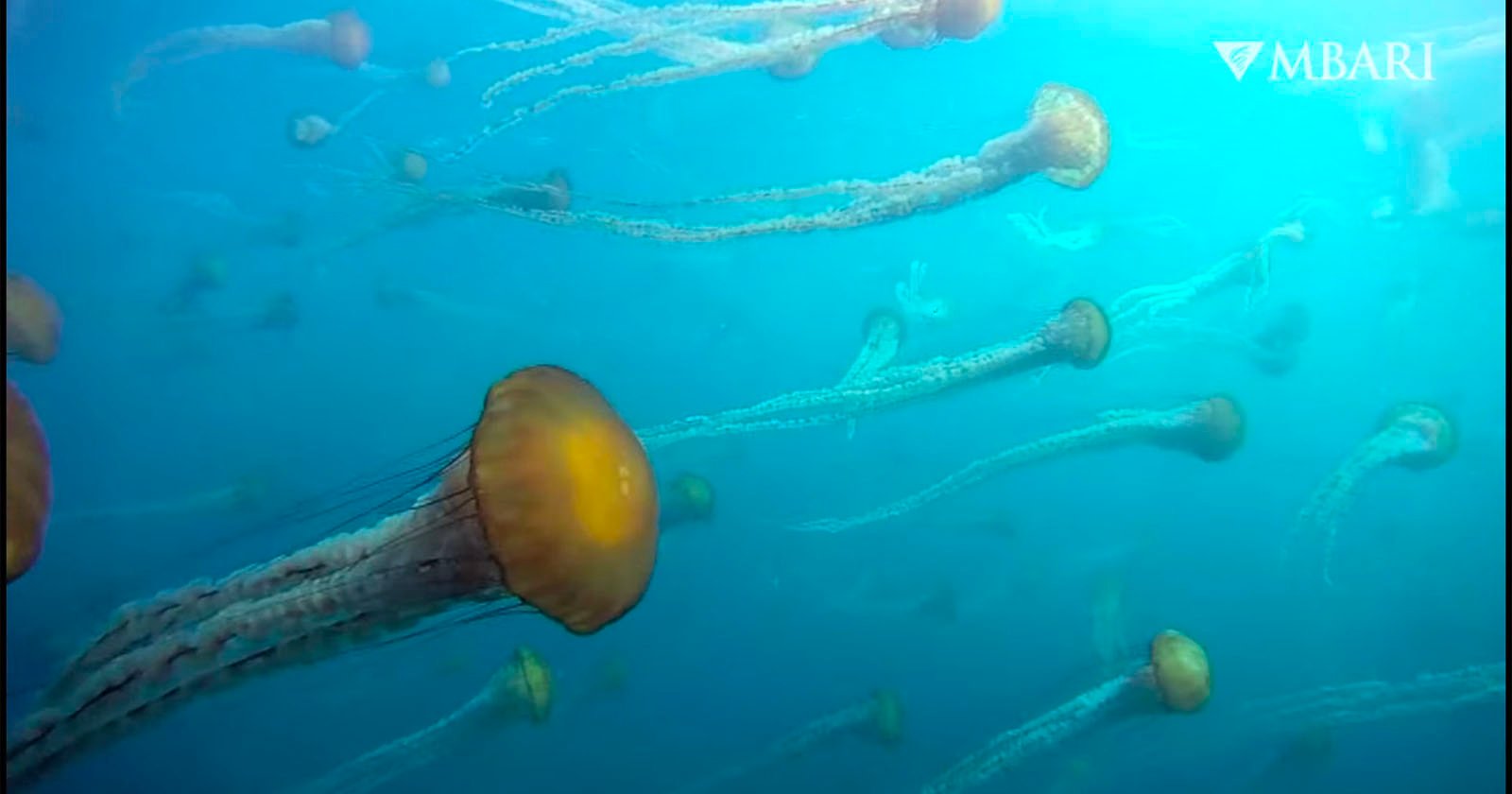
A new camera system developed by the Monterey Bay Aquarium Research Institute (MBARI) allows for a better look at elusive sea predators. The tool comes out of MBARI’s Piscivore project, which utilizes small autonomous robots to catch glimpses of underwater predators and their surroundings, a task that’s typically easier said than done. MBARI MBARI “Marine predators such as tunas, sharks, seabirds, and marine mammals play a pivotal role in structuring ocean ecosystems. Despite their importance, these animals remain challenging to study,” a release from MBARI states. “They spend much of their time far from shore and dispersed across remote stretches of the global ocean. Many are highly mobile and associate with dynamic ocean habitats that change hourly and can be wary of boats and submersibles.” However, the organization notes these creatures are critical to study as they face dangers like overfishing and climate change. Enter Piscivore.
MBARI “Marine predators are difficult to study because they’re rare, highly mobile, and the ocean is vast. The challenge is being in the right place at the right time, but now robots equipped with MBARI’s Piscivore system can give us a glimpse into the lives of tunas, sharks, and other predators, providing valuable information to better understand these important animals,” Ocean Observatory Engineer Jared Figurski, who is the principal investigator for MBARI’s Piscivore project, said in the organization’s release. The Piscivore camera system, MBARI explains, mounts two cameras onto a long-range autonomous underwater vehicle (LRAUV), one facing ahead and one facing behind. “Many predators move out of the way of animals and objects that approach them. Piscivore compensates for the skittishness of pelagic predators by dragging a piece of textured metal in its wake,” MBARI explains in its release. This underwater vehicle is then piloted remotely. MBARI So far, the camera system has captured a large female white shark, blue sharks, shortfin mako sharks, Pacific bluefin tuna, and salmon. It’s deployed “roughly two weeks at a time,” according to the organization, and logs approximately 100 hours of high-definition video from each of the two cameras during missions. In addition to capturing footage of predators, Piscivore has taken images of seabirds as well as sea mammals like Pacific white-sided dolphins and California sea lions. It’s also seen smaller fish, including sardines, anchovies, and mackerel. MBARI
“Our team is interested in understanding the relationships among ocean animals. We use sound to map life in Monterey Bay using robots to tell us how many of what types of animals are where,” Senior Scientist Kelly Benoit-Bird, who leads MBARI’s Acoustical Ocean Ecology Team, said in a release. “Using sonar alone, however, it is difficult to identify specific species. Piscivore fills that gap, giving us a new window to understanding predator-prey relationships.” Image credits: MBARI






